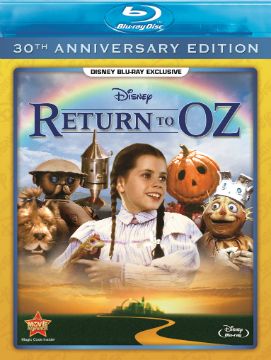 |
| Art by Sam Milazzo from "The Way of a Lion" |
The Cowardly Lion tells Dorothy when they are in the Kalidah forest and tells her what they look like:
"They are monstrous beasts with bodies like bears and heads like tigers," replied the Lion, "and with claws so long and sharp that they could tear me in two as easily as I could kill Toto. I'm terribly afraid of the Kalidahs."And my little story "The Way of a Lion" tells you why he said that, but that's beside the point.
For being so fearsome, the Kalidah's appearances in the Famous Forty are few and only by Baum himself. In Wizard, they appear as Dorothy and her friends are trying to cross a gulf by a felled tree. The Kalidahs pursue the travelers onto the tree, but before the monsters can cross, the tree is sent into the gulf.
Their next appearance is in The Magic of Oz in which one of them attacks Trot and Cap'n Bill, who is able to skewer it and pin it to the ground. Eventually, it frees itself and wanders off to a Kalidah magician who will be able to heal it.
There are a few Kalidah-centric stories outside of the Famous Forty. One of my favorites is "Gugu and the Kalidahs" by Eric Shanower. This story has some renegade Kalidahs invade the Forest of Gugu. Eric does feature a Kalidah King and suggests that Kalidahs are cruel beasts who abuse each other. (Gugu sees a female Kalidah being clawed at for the amusement of others.)
In Bucketheads of Oz (written by Chris Dulabone and several of his friends), a Kalidah community is detailed, particularly how they treat each other. Something about it seems a little too orderly with how long families stay together and even a "considerate Kalidah" being put on trial.
So, how do I see the Kalidahs? They are the most vicious creatures in Oz. In "The Way of a Lion," I reveal that most animals in Oz get meat from special plants. It's mentioned that Kalidahs only eat these as a last resort: half of their meal ritual is the hunt.
The Kalidahs have been skipped in most major adaptations of The Wizard of Oz. The Wiz musical had "the Kalidah people," and the movie had Dorothy and her friends being chased by giant evil puppets and attacked by live support poles and trash cans. The Muppets Wizard of Oz had Statler and Waldorf as "the Kalidah critics." Tin Man featured the Papay, monsters that could bite and kill our heroes.
Animated adaptations have been far more generous to the Kalidahs, except while many are monstrous (being large or threatening beasts, the best going to the Toho anime adaptation), few are actually menacing. The 1999 Russian animated version actually turns them into giant lizards.
In Alexander Volkov's Magic Land series, the Kalidahs were replaced by Saber-Toothed Tigers. They're largely the same in Wizard, but at the end of Urfin Jus and his Wooden Soldiers, the Deadwood Oaks are tasked with exterminating the rest of them. (One escapes this fate, but is later killed by Munchkins following advice from Tim in The Fiery God of the Marrans.)
One might ask why didn't Ozma do this? Because even though the Kalidahs are cruel menaces to Oz, they are part of it. They are not the most desirable, but they're part of nature. And furthermore, even if the Kalidahs destroy life, would destroying theirs make those who did them in any better?
So, Oz will have its dangers, and the Kalidahs aren't going anywhere.


























